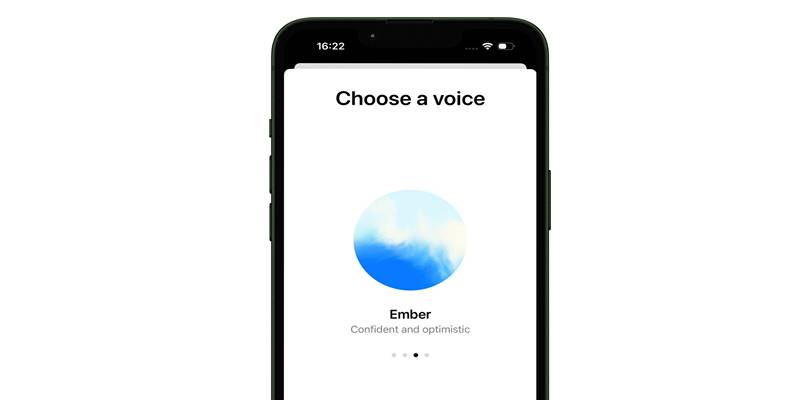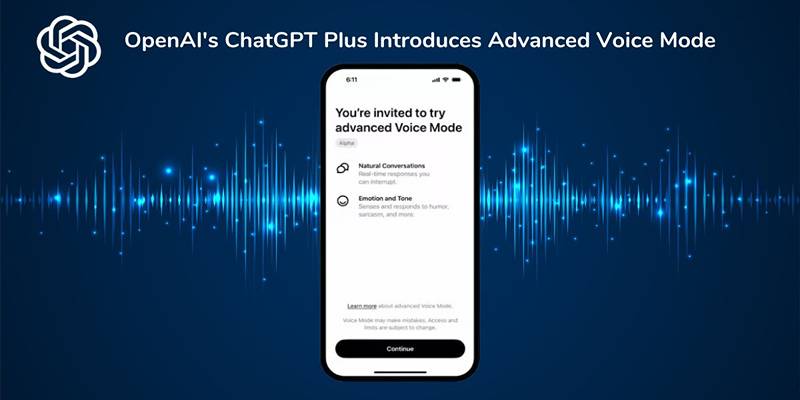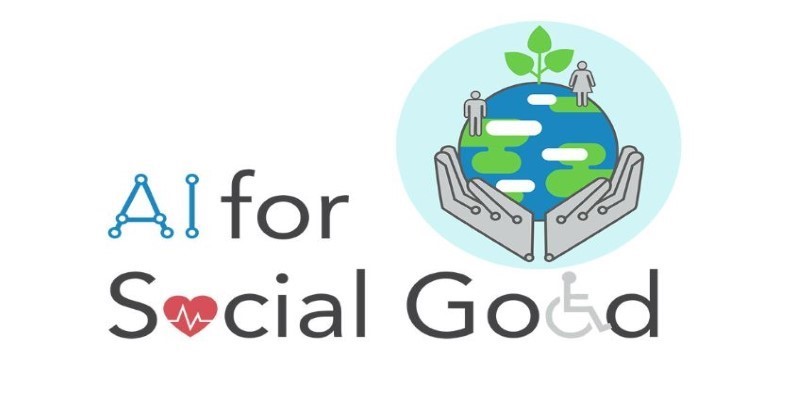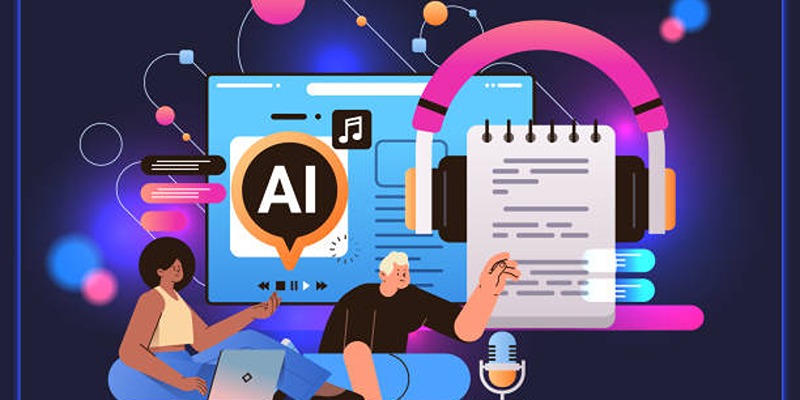The way people interact with AI is rapidly evolving. What began as text-based queries has now moved toward full conversations powered by voice. OpenAI’s latest update is proof of that. With the rollout of its Advanced Voice Mode (AVM), ChatGPT is now more engaging, expressive, and conversational than ever before—and it’s becoming available to a wider user base.
This rollout marks a major step forward in making AI feel more human, less robotic, and significantly more interactive.
What Is ChatGPT’s Advanced Voice Mode?
Advanced Voice Mode is more than a simple text-to-speech add-on. It’s a real-time, two-way conversational feature that allows users to speak to ChatGPT and receive lifelike, natural responses—without typing a single word. The aim is to make conversations with AI as smooth and engaging as speaking to a human assistant.
Think of it as Alexa or Siri, but significantly more intelligent, emotionally expressive, and customizable.
AVM offers not just voice recognition but nuanced listening, emotional tone, and responsive dialogue speed. Conversations are fluid, and there's no noticeable lag between when users speak and when ChatGPT replies.
Advanced Voice Mode Comes to More ChatGPT Tiers
OpenAI has officially begun expanding access to ChatGPT’s Advanced Voice Mode. Initially limited to select testers, the feature is now being made available to ChatGPT Plus and ChatGPT Teams users. Those on Enterprise and Education plans can also expect to see access in the near future.
This expansion is part of OpenAI’s broader effort to transform how users interact with artificial intelligence—from keyboard-based inputs to fully spoken dialogue.
However, not all regions are seeing the update right away. Due to regulatory concerns, AVM is currently unavailable in the EU, UK, Switzerland, Norway, Iceland, and Liechtenstein. These countries often enforce stricter rules regarding AI technologies and data privacy, which may be delaying approval.
New Voices Add Personality and Depth

As part of the feature rollout, OpenAI has expanded its voice offerings. The Advanced Voice Mode now includes nine unique voices, up from the original four.
The current voice lineup includes:
- Breeze
- Juniper
- Cove
- Ember
- Arbor
- Maple
- Sol
- Spruce
- Vale
Each voice is named after elements found in nature, symbolizing how the AI is designed to feel more organic and grounded. The variety ensures users can select a tone that resonates with them—whether that’s calm and soothing, upbeat and energetic, or somewhere in between.
One voice, Sky, has been removed following concerns raised by actress Scarlett Johansson, who claimed the voice resembled her own. This move underscores OpenAI’s sensitivity to ethical boundaries and public perception.
Key Improvements Since the Initial Preview
The version of AVM being rolled out to users today isn’t identical to what was first showcased months ago. OpenAI has made several behind-the-scenes enhancements, including:
- Faster Response Time: ChatGPT now speaks more fluidly, creating a more natural flow in back-and-forth conversations.
- Smoother Dialogue Transitions: Conversations no longer feel segmented; replies come across more like natural speech.
- Accent Adaptability: ChatGPT can better handle non-native English accents, making the voice feature more accessible globally.
- Dynamic Voice Interface: The chatbot is now represented by a glowing blue sphere, replacing the previously used black dots—giving users a more interactive and polished interface.
These upgrades collectively make the entire experience less mechanical and more human.
Voice Mode Now Includes Custom Instructions and Memory
One of the most significant additions is the integration of Custom Instructions and Memory within voice interactions.
- Custom Instructions allow users to fine-tune how ChatGPT responds. For example, users can tell ChatGPT to adopt a casual tone or answer in short, concise formats. This customization was previously limited to text chats but is now available in voice mode as well.
- Memory takes personalization a step further. ChatGPT can now remember details from past voice conversations—like names, preferences, or even recurring requests. Users can also manage this memory by reviewing, editing, or deleting saved information through the settings panel.
These features are designed to make repeated interactions more personalized and productive over time.
How It Feels to Use Voice Mode?
Users who have tried AVM describe the experience as refreshingly natural. Instead of typing prompts and waiting for generated blocks of text, users can now speak their queries and get verbal responses that match the pace and tone of real conversation.
This creates a more immersive, intuitive experience, particularly for tasks like brainstorming, storytelling, planning, or asking for quick verbal summaries during busy moments. It’s also useful for accessibility purposes, supporting users who prefer or require voice-based input due to physical limitations.
The ability to “talk to AI” has reignited interest in conversational technology, reminiscent of the early buzz around digital voice assistants like Siri and Alexa—but with significantly more intelligence behind the voice.
Why This Matters in the Bigger AI Landscape?

The introduction and expansion of Advanced Voice Mode signals a shift in how AI is expected to operate in everyday life. AI is no longer just a research assistant or productivity tool. It’s becoming a digital conversational partner—one that listens, remembers, and adapts.
This development also paves the way for more advanced, multimodal AI experiences. Voice, text, images, and video will soon blend seamlessly, and AVM is one key piece in that puzzle.
Moreover, this feature is particularly meaningful in sectors like:
- Education: Helping students learn through interactive voice dialogues.
- Customer Support: Assisting with real-time voice troubleshooting.
- Healthcare: Offering friendly conversational check-ins or mental health support bots.
- Smart Homes: Integrating into voice-operated devices for seamless control.
What’s Next for AVM?
While Advanced Voice Mode is impressive, it’s still evolving. OpenAI has hinted at broader access, greater voice customization, and deeper memory capabilities in future updates.
As voice AI becomes more prevalent, issues like privacy, data storage, and regional compliance will continue to shape the rollout. Still, the direction is clear—real-time, voice-powered AI is no longer a futuristic concept. It’s here, and it's becoming more accessible by the day.
Conclusion
ChatGPT’s Advanced Voice Mode is now reaching a wider audience, and with it comes a new standard for AI interaction. The blend of responsive dialogue, natural voice options, memory retention, and custom instructions brings AI conversations one step closer to sounding—and feeling—like they’re happening between two people.
As this feature expands, it’s not just changing how people use ChatGPT. It’s redefining how we interact with machines altogether.











